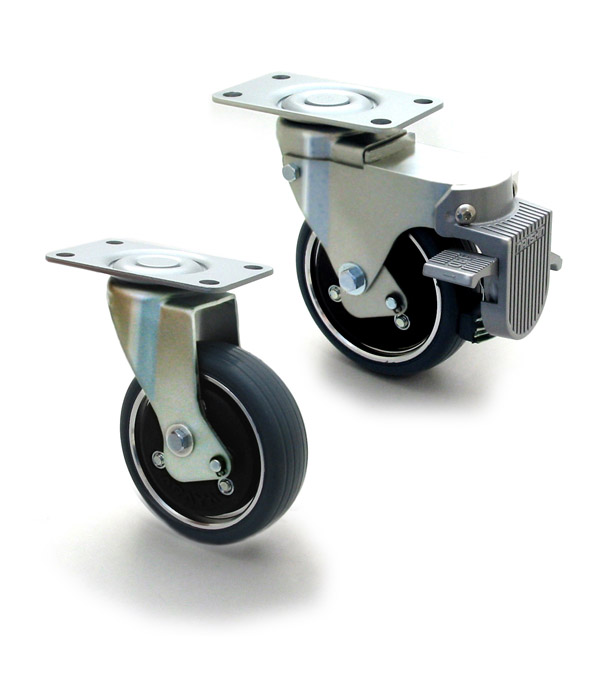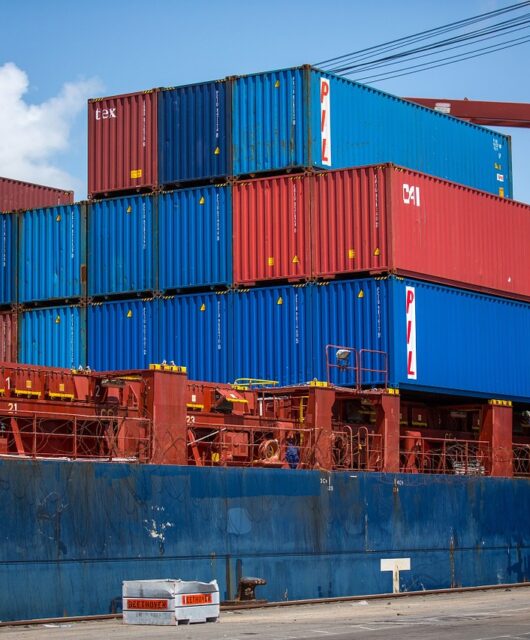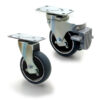The Benefits of Loaded Casters for Industrial Applications
 There are many advantages to using loaded casters for industrial applications. They are made from materials resistant to corrosive environments, and the rubber used in these casters is highly durable. Casters come in various forms, including pneumatic, hydraulic, and Neoprene rubber.
There are many advantages to using loaded casters for industrial applications. They are made from materials resistant to corrosive environments, and the rubber used in these casters is highly durable. Casters come in various forms, including pneumatic, hydraulic, and Neoprene rubber.
Pneumatic Casters
Pneumatic casters are often used in the industrial industry. They are available in many different types and designs and offer several benefits. Some of these include improved traction, better grip, and safety. Using these casters makes moving equipment or fragile cargo much safer.
A pneumatic caster reduces friction between the caster wheel and the floor and provides a smoother ride. Pneumatic casters are made from natural or synthetic rubber. Their use is mainly outdoors but can also be found in indoor applications.
Pneumatic casters are popular in the material handling industry. These casters are often used in outdoor applications and provide exceptional cushioning for loads transported on rough surfaces.
Pneumatic casters are durable and are designed to last a long time. The wheels have a wide footprint and small spring loaded casters, making them ideal for challenging surfaces. However, they require more initial force to move the load and can flutter when turning.
Neoprene Rubber Casters
Neoprene rubber-loaded casters for industrial applications are durable and flexible. They can withstand extreme temperature swings. In addition, they are also resistant to harsh chemicals and grease. These features make them ideal for many different industrial applications.
Neoprene is a synthetic rubber that is manufactured through a process called polymerization. It is a non-allergenic material that can resist harsh chemicals and grease. This makes it perfect for industrial applications, especially medical applications.
Casters made from neoprene are a popular choice for businesses and hospitals. They provide smooth rolling and quiet operation. Plus, they are also resistant to chemicals, grease, and temperatures.
Some manufacturers use neoprene with a more rigid core material to increase its durability. This allows neoprene wheels to operate at higher speeds and in harsher environments. Another benefit is that neoprene wheels are quieter than rigid plastic casters. Unlike polyurethane, neoprene does not degrade when exposed to mild acids and other solvents.
Heavy Duty Casters
Industrial casters are used for several purposes. They enable workers to perform tasks more efficiently and save them time. In addition, they can be used to move heavy loads and waste.
Heavy-duty casters are made from durable materials, which is a good thing. These casters can be made of carbon steel, cast iron, rubber, or phenolic resin. The material that is best suited for the job will depend on the surface it will be placed on.
A heavy-duty caster is a must for manufacturing plants, warehouses, and assembly lines. They are also used to transport furniture, appliances, and packages. This is because of their ability to absorb shocks.
Choosing the right caster for your application is a challenging feat. There are many factors to consider, including the size of the load, the surface the caster will be placed on, and the speed at which the caster is required to move. Fortunately, some companies offer heavy-duty casters with brakes to ensure safety.










